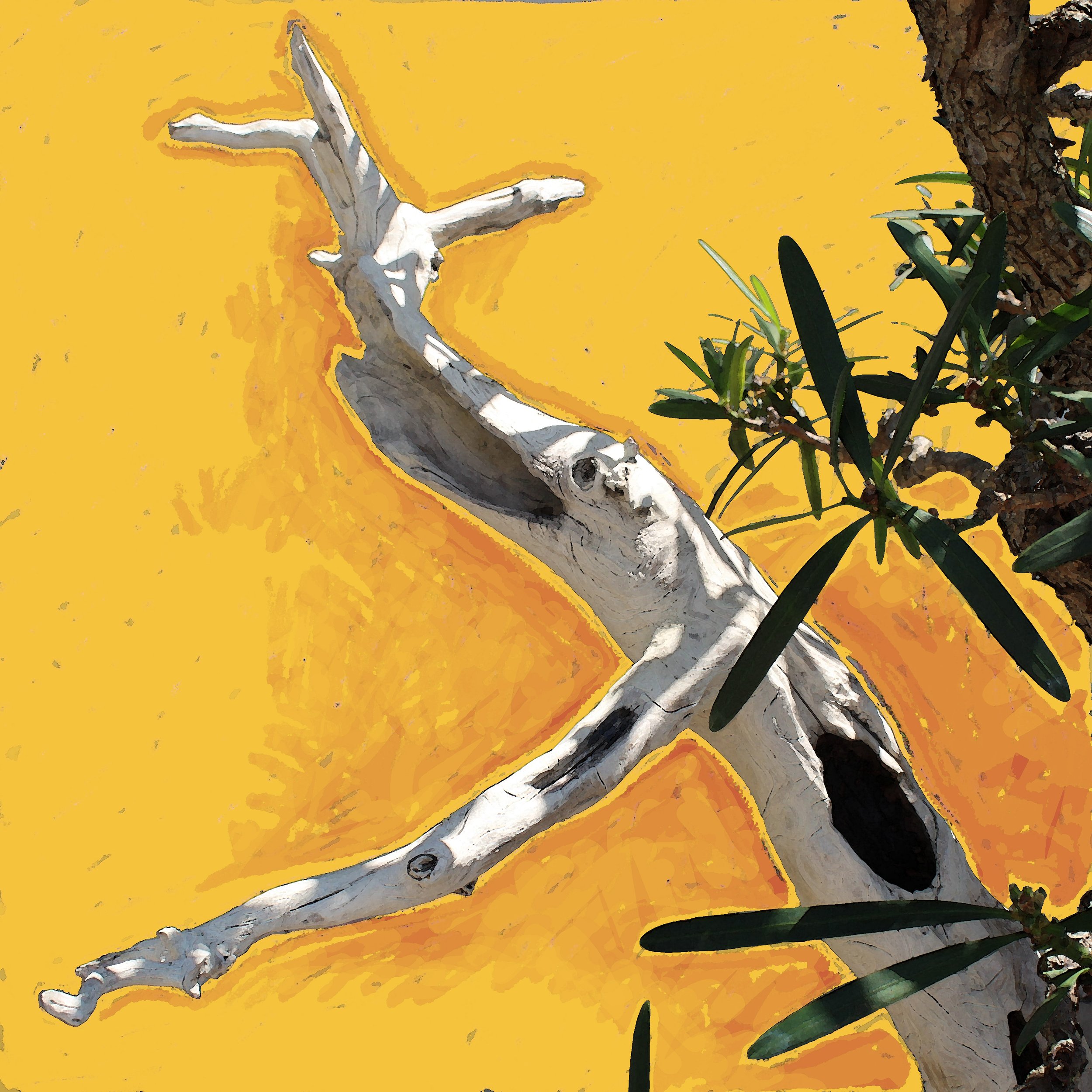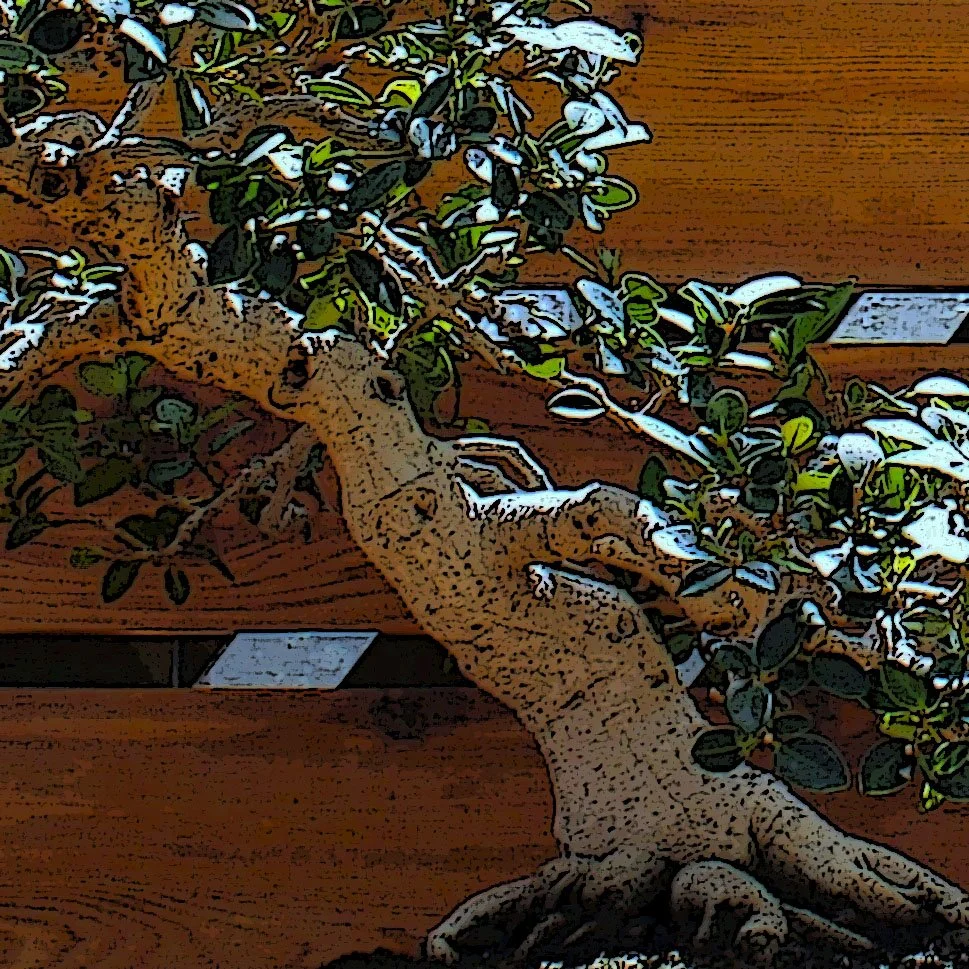Even after removing the dead beech tree, I did not do much with the hemlock for a while. I spent the time taking care of other plants while keeping an eye on what remained of Mr. Yoshimura's tree and thinking about what to do next. I had always seen those trees as being subsidiary to some larger element: first the original primary trunk of the hemlock and later the American beech that replaced it. Now it was time to evaluate them on their own.
Read MoreMost tray landscapes depict generic scenes from nature, but the possibility exists to have them represent more specific, real-life places. The challenge in doing this is finding a key feature of a given place that can be worked into the design of a tray landscape, suggesting the identity of the place being represented.
Read MoreIn bonsai, American hornbeam is more commonly used than hop-hornbeam. The reason for this is somewhat mysterious, given both species work equally well for the purpose. This disparity is reflected in the Arboretum's bonsai collection, where we have numerous American hornbeam specimens but only one hop-hornbeam. The one hop-hornbeam specimen we have is substantial, however, and we've had it for a long time.
Read MoreThere was a big pot made of redwood, the kind you might use for growing a tree out on a patio, and jutting up out of the soil in the pot was a piece of wood like an upside-down baseball bat. Mr. Staples came along so I asked him if the trunk in a pot was supposed to go with us. “Yeah,” he said, “That goes.” I bent to pick it up. “Be careful with that,” he said, “I paid five hundred dollars for that stick!”
Read MoreWhen you look at an old bonsai you might never guess the history of it. For example, we have in the Arboretum's bonsai collection a large podocarpus (Podocarpus macrophyllus), which we can reasonably surmise to be around seventy years old. To look at it you might well recognize that it looks aged, however nothing in its appearance will give you reason to think our podocarpus grew up at a correctional facility. But it did.
Read MoreThere is another Graveyard Fields. It is considerably smaller than the one off the Parkway but much more accessible, and it is never crowded there unless you want it to be in your imagination. The Graveyard Fields I'm talking about now is a miniature representation of the real place and it can be seen on just about any visit to the Arboretum's bonsai garden when little trees are on display.
Read MoreThe idea of using a wooden planter for a tray landscape had somehow become appealing to me early on. The box used for the Graveyard Fields planting was a first attempt at such, and provided lessons that helped improve the wooden planters we subsequently built for use. After ten years in the wooden container, however, it seemed Graveyard Fields was ready for a modification to its look.
Read MoreThere was a lot of experimentation going on in those days. I tried many different techniques as a means of self-education, and some of these efforts succeeded while others failed. Starting new Amur maple bonsai from cuttings was a success. Starting a new Amur maple bonsai from a cut-back stump was a success. Putting these maples together as a group planting was also successful, although there was a hitch in the process that I didn't recognize until later.
Read MoreBonsai that are very big, or very small, or very old, tend to be the kind of bonsai that attract the most attention. It is their novelty that makes them so appealing. But the fact is that most bonsai do not fit into any of those three categories, and so it should come as no surprise that most of the bonsai in the Arboretum's collection don't fit into those categories either.
Read MoreAn acquaintance back in the late 1990s gave me a little red maple (Acer rubrum) in a pint-size pot. It had been grown from a cutting taken from a tree that exhibited outstanding autumn color. Although this very young plant offered absolutely nothing to suggest it would make a good bonsai, I thought I would aim it that way because in those days every plant I came across was a likely candidate for that purpose.
Read MoreA natural tendency toward obstinacy was only one factor in my inability to let go of the maple and put the sorry tale down to experience. While I was fumbling around with all the difficulties caused by the bifurcated root structure, I was having much more success shaping the upper portion of the tree. This maple was one of my earliest efforts at naturalistic styling and I was pleased with its progression.
Read MoreIt might be supposed by people who don't know the backstory that this specimen was given the poetic name The Ogre in reference to the gnarly features of the deadwood, which can be read as a monstrous creature with one small, beady eye glaring out. But really it was named for the person who collected, styled and donated the little tree to our collection: Nick Lenz, the original wild man of American bonsai.
Read MoreThe beech trees used in this planting were grown from seed at the Arboretum in 1993 as part of the landscape nursery operation. When California bonsai artist Ben Oki visited us in 1996 we gave him some of these very young trees and asked him to make a group arrangement of them.
Read MoreThose little trees earn their keep at this time of year by providing a leafy green bonsai presence in the Baker greenhouse from December until the middle of May. People appreciate seeing the tropical bonsai looking so vibrantly alive while the temperate world outside, wrapped up in the somber cloak of dormancy, settles into the relative dullness of cold winter.
Read MoreOnce Don designated the bougainvillea as being excess plant material — not worth the trouble — it became valuable to me. I was not trying to prove anything or setting out on a mission to save it, but once the bougainvillea was deemed unworthy that meant nothing I might do to it would mess it up. I could try to make a good bonsai out of the wild bougainvillea just for practice, and if it didn't work out the plant could still go to the compost pile.
Read MoreMy guess is that very few of the many people who have admired "Yoshimura Island" over the past three decades have taken note of the ingenious composition. In truth, I did not fully appreciate it myself until I learned more about bonsai than I knew at the time the planting was created. What Mr. Yoshimura had done with the arrangement of this planting and why he did it was something I discovered only after years of looking at it and thinking about it.
Read MoreIt is impossible to know what the future might hold for young and undeveloped talent. When I was young and collected baseball cards, the card manufacturers treated rookie baseball players the same way for the same reason. "Rookie" cards combined two unknown young players on one card. Usually, neither of the players would amount to much.
Read MoreThere is a sense of timelessness inherent in a finely crafted bonsai. When the viewer stands before such a piece, there is the illusion of a moment suspended, an impression of all that came before and all that is to come obscured as if under enchantment. It is as if the bonsai came into existence just as it is and will always remain just so.
Read MoreThe tree looked more convincingly decrepit but still grew strongly in its branching and foliage. The container made of chestnut wood also became more picturesquely weathered as it aged. For a few years everything was right about this planting and it attained that golden stage of development when the illusion of timelessness seemed permanent. Then the bubble burst.
Read MoreOn the eve of construction, before the bulldozer came to work over the site in preparation for building the garden, I dug up one of the scraggly young serviceberries and put it in a pot. The little two-trunked tree didn't look like much. Collecting it was an impulsive act, done in the spirit of saving some living piece of what used to be, knowing that the space was about to be transformed.
Read More


















